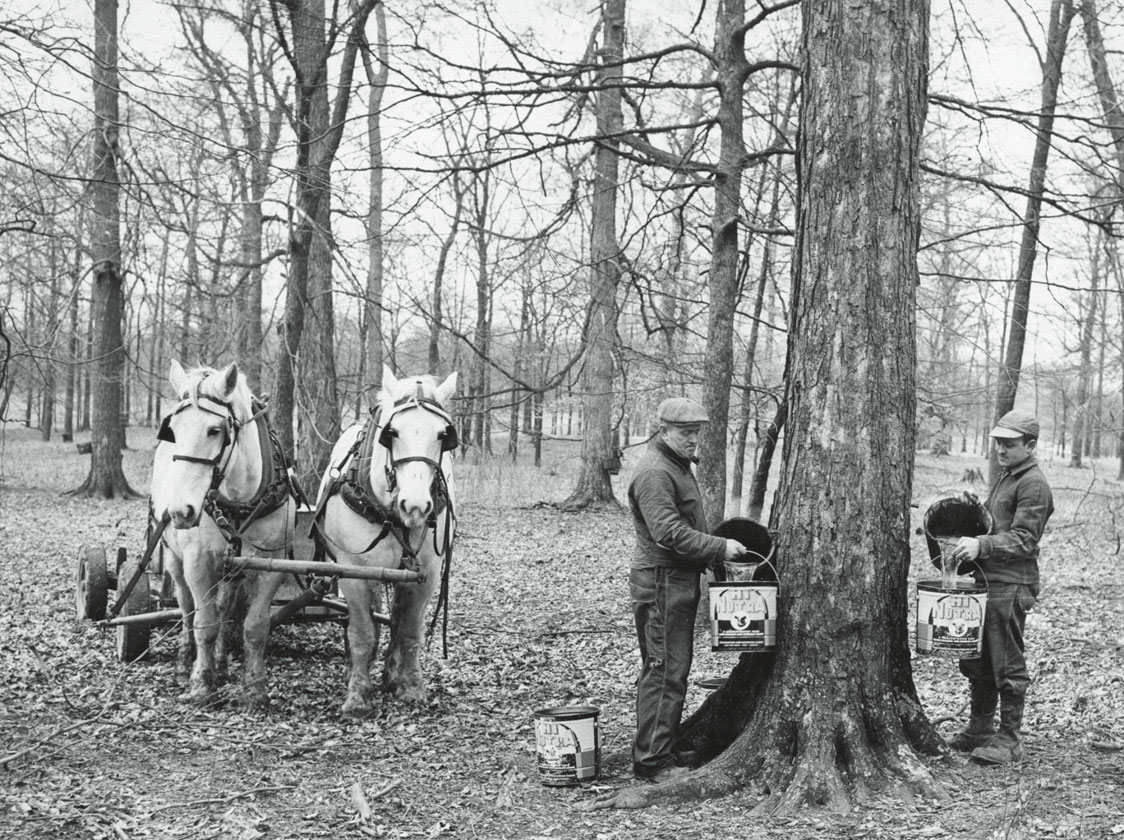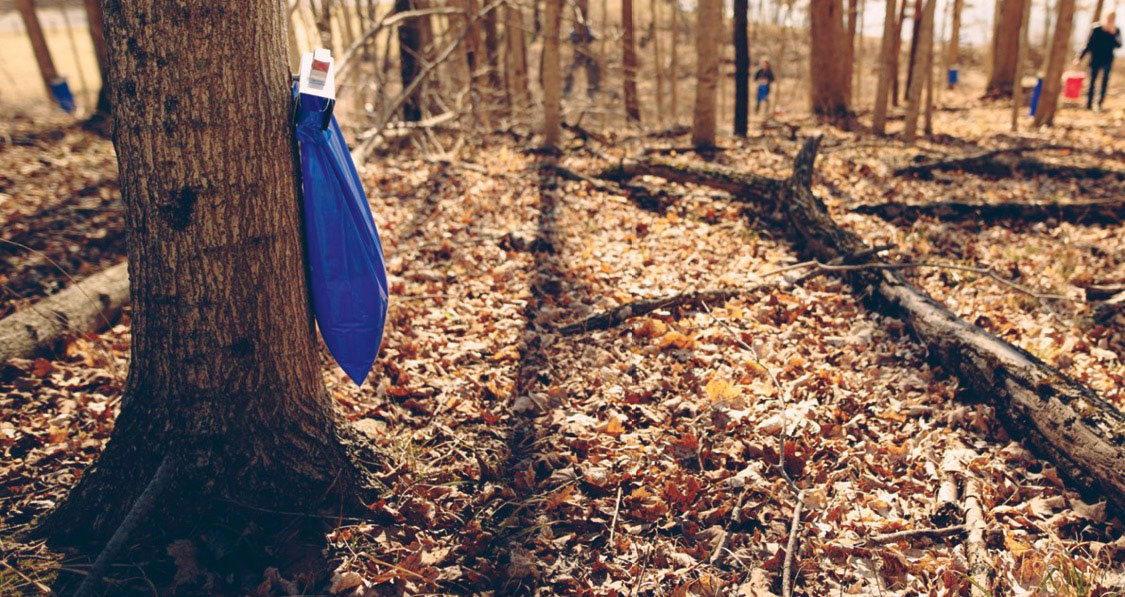Tapping into Our Roots
Indiana has a long history of producing and consuming maple syrup. This natural sweetener was an important part of Native American culture and became revered by the Europeans who settled in the state. By the early 20th century, Indiana was one of the largest syrup producers in the United States.
Maple forests are part of the climax Beech-Maple Forest, one of the most common types of forest in the northeastern United States. Maple trees grow well in a variety of soils and can survive under low light conditions for a number of years. Due to its high sugar content, the sap from a sugar maple (Acer saccharum) tree is preferred for producing maple syrup, although syrup can be made from the sap of other maple varieties as well, such as silver (Acer saccharinum) and red (Acer rubrum) maple trees.
Even though in the past Indiana was a major producer of maple syrup, over time other crops have dominated the state’s agricultural landscape. Most row crops, such as corn and soybeans, became mechanized and are preferred over the production of maple syrup. Also, new sweeteners, such as corn syrup and sugar from sugar beets, have entered the market, creating low-cost competition for the consumer’s sweet tooth. Maple syrup production in Indiana has diminished significantly over the past century due to world wars, urban migration, The Great Depression, and declining available labor on farms.
Recently, a new crop of producers has started tapping trees, and the supply of maple syrup is increasing as new technology is playing a role in production efficiencies. In 2020, Indiana only accounted for 0.6% of total syrup production in the United States; however, this is up 20% over the previous year.
Maple syrup consumption is also fueling the trend to produce more maple syrup within the state. Consumers want to know where and how their food is produced and are demanding locally-grown or locally-made products. Also, the public is becoming aware of newly discovered human and environmental health benefits resulting from the production of maple syrup. Studies have shown that 100% pure maple syrup is packed with over 60 antioxidants called polyphenols, nine of which are unique to maple syrup. For example, the polyphenol, Quebecol, is naturally produced when sap is boiled to become maple syrup. Maple syrup is also high in minerals such as calcium, copper, iron, magnesium, manganese, potassium, sodium, and zinc. It is considered to be a “smarter sweetener” and is a healthier choice for those adding something sweet to their diet.
In addition to providing a healthy alternative sweetener to our diets, maple forests also supply key environmental services. For example, maple trees provide important stop-over sites for migratory bird species, including the cerulean warbler, rose-breasted grosbeak, scarlet tanager, eastern towhee, eastern screech owl, and the ruby-throated hummingbird. Beach-Maple Forests sequester carbon and protect water and soil resources. Maple syrup producers maintaining a healthy maple forest can offer habitat for local and migrating fauna, create climate smart practices, and enhance soil health principles.
Maple syrup production is an important source of income for landowners as they can monetize the sap from their maple trees. Maple sap is converted to syrup through a process of collection, vaporization, filtering, and packaging. Indiana maple syrup is sold at multiple venues, including farmers’ markets, on-farm stands, local grocery stores, online sales, various festivals throughout the state, and at the Indiana State Fair.
The United States Department of Agriculture (USDA) recently funded a Purdue University project titled Increasing Consumption and Production of Maple Syrup through an Integrated Marketing Strategy. The project focuses on increasing demand while improving production practices. A consortium of partners, including Purdue Extension, USDA-NRCS, Indiana State Department of Agriculture’s Indiana Grown, and the Nature Conservancy, will support the Indiana Maple Syrup Association (IMSA) and other producers across the state to amplify awareness of maple syrup production in the state and to increase consumption. To fulfill the goals of this initiative, the project team, which includes 12 maple syrup producers serving on the advisory board, will focus its efforts on an educational campaign to promote the benefits of maple syrup consumption and the environmental services provided by natural forest systems. The overarching goal of this new project is to tap into the roots of our Hoosier heritage, build community connections across the state among producers, consumers, and other stakeholders, and expand the production and consumption of this truly wonderful natural sweetener.
Dr. Tamara Benjamin was the Assistant Program Leader for Diversified Food and Farming Systems with Purdue Extension. Recently she became Program Manager for Agriculture, Food and Natural Resources at the University of Minnesota. Eric Lee is co-owner of Stix2Brix, producing maple syrup in Madison County, Indiana.
